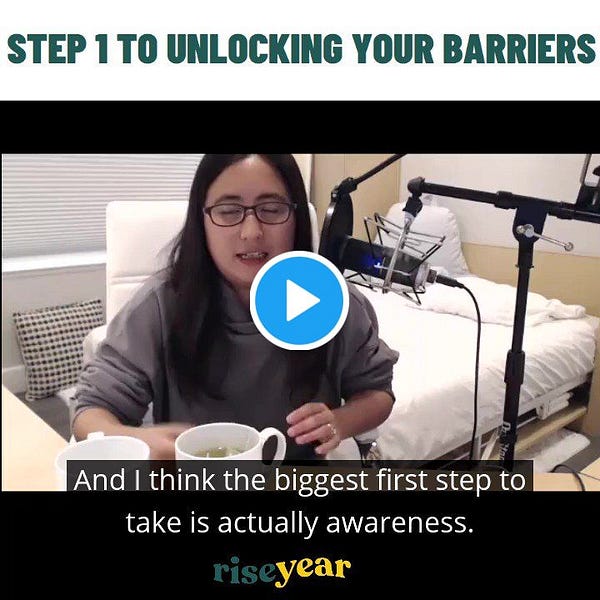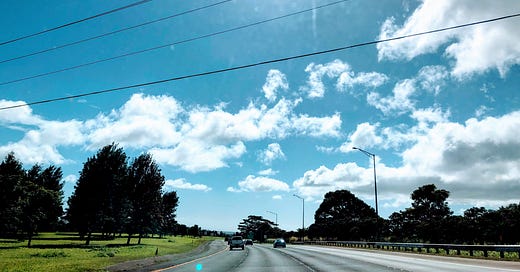I decided to drive because I wanted to explore the world on my own. I wanted to drive because I wanted to transport myself in a timely fashion.
I got my driver's license at eighteen, but I didn't know how to drive alone until twenty-four. My parents, who agreed to let me test-drive their cars in Taipei, always made the ride quite stressful: "MIND THE MOTORCYCLE!" "SIGNAL AND SWITCH FAST!!" "SLOW DOWN!!!"
A few months after receiving my newly minted license, I found myself in Brown University’s college town, where Uber and Amtrak could conveniently take me to my favorite café Pastiche Desserts, to Boston, and beyond. After a few years, I came to the Bay Area and met my now-husband, Chris. He was a terrific and careful driver. I enjoyed being the DJ and conversationalist of the ride.
What changed during the pandemic year? Why did I want to inconvenience myself? Was I trying to prove my driving ability to my parents, or was I trying to prove it to myself?
My immediate trigger was more straightforward: I wanted to go to Half Moon Bay to enjoy a week with myself. When I got married, I acquired Chris’s family members and a new suite of family traditions. I got to attend weddings, parties, and company events as a couple. People assumed couples came together—because they often did or because they were often expected to. We rarely questioned the social contract because we didn’t want to inconvenience others. We would rather bother ourselves.
I missed going on a trip with myself. It was time to renew my license.
My driver’s license was transferred from Taipei to Rhode Island and expired a year ago from today. When Chris was there, there was no immediate need to renew my license. Plus, the last thing I wanted to do was to spend hours at the bureaucratic D.M.V.
Reluctantly, I booked an appointment for the next day. My low expectations made my entire visit at 3665 Flora Vista Ave a treat. My appointment got me past the long waiting line. The dense office gave me a corona scare, but I was too excited about the prospect of having—and driving with—a valid license for this to deter me. After three windows of paperwork, I got a suitable photograph taken and mailed the renewal application. I felt terrific about hitting the road.
I eased into my local neighborhood and memorized the road to my favorite local park. “Do I turn here?” I would ask, despite the explicit instruction on the large dashboard, and relished in Chris’s reassurance. After a few weeks, I wanted to go further. I wanted to get on Highway 85 because that’s the fastest path to work, golf, and swimming. There was no way around it.
“Drivers do not yield. Take your chances!” Chris reminded me as I pulled up the highway. I signaled and waited for four impatient drivers to speed by. The feeling was similar to my high school stage fright. You have to breathe in the fear and just do it. I took each highway entry as a training ground for assertive communication. To enjoy the highway, I needed to earn the ride. I had to switch lanes and signal my preference assertively and carefully.
When I got past the scary moments, I slid our electric car into the carpool lane at eighty miles per hour and kept my eyes rigidly pointed ahead.
“You’ll get pulled over past eighty!” Chris cautiously lectured, as I got the car back within limits.
“Turn the wheel slightly and feel the movement of the car,” Chris calmly asserted, “You want the car to move as an extension of your mind. You want to be one with the car.”
Three or four times a week, I would take my friends around the city. When Chris was not around, I often drove a lot better. I stopped seeking confirmation and enjoyed driving alone—even on the highway. I slowed down and stayed within the lane at each turn. I signaled and slid gracefully at each switch. I scooped over to the leftmost lane and prepared to exit in a mile.
After a few weeks, I jumped at a chance to drive the windy road to Tahoe. As a new driver, I cautiously inched at five miles per hour through mountain roads without a guardrail. Driving, I realized, is not that hard; just extremely dangerous. Anyone who has a license can go at any speed they desire. There are rules and speed limits, but folks rarely follow them in the mountains. Driving is terrifying, by its nature.
This delicate balance between freedom and danger is our civilization’s signature. You press a pedal and unsuspecting pedestrians can die. You pull a trigger and fifteen enemies die. You drop a bomb and a city vanishes. As technology advances, we get to achieve maximum leverage with minimal effort. That’s the genius of invention, yet it is also the recipe for catastrophe. When I drove, I couldn’t help but see how badly absent, drunk, tired driving could destroy people’s lives. The panic revived my fear. I had to find other ways to overcome it.
One way to calm me was to become more like Chris. He would sing and playfully steer the wheel. “I am the car. The car is me.” He would drive along the California Highway 1 coastline to enjoy the ride for hours alone. Growing up bearing everyone’s attention as the only child in the family, Chris relished in the moments to be alone with his thoughts. Watching him drive reminded me of the joy of a ride. Perhaps, I could enjoy the ride as much.
Driving changed my perception of the city. The city is connected through traffic networks, crossroads, and stop signs. I’m just a node moving from one node to another in this intricate network.
I put the license under the armrest and began to drive every day. That little card gave me permission to explore the world on my own.
The better I get at reading the street signs, the more prepared I am; the more I appreciate driving. Despite the danger on the street, driving is a manifestation of how a contract can enable the safety of pedestrians, the self-agency of commuters, and the flourish of the two-trillion-dollar auto industry. That’s civilization.
Knowing how to drive can be a part of knowing how to live.
This piece is inspired by Adam Gopnik, who seeded the love of nonfiction a few years back in college.
Special thanks to Chris, Dani, Jessica, LaKay, Stacey, and OluTimehin for providing feedback on early drafts. You can skip the line and check out the Foster writing community here.Elsewhere with Charlene
I interviewed two of my favorite online writers—Yanyi and Eugene Wei—this week.

… and made a guest appearance on my friend Taylor’s podcast:


I’m very excited to kick off the ✨ LivingOS Fellowship summer cohort ✨ next weekend and start my new rotation at Nest!


Want to work together? Feel free to reach me on Twitter or book a workshop here 💚




